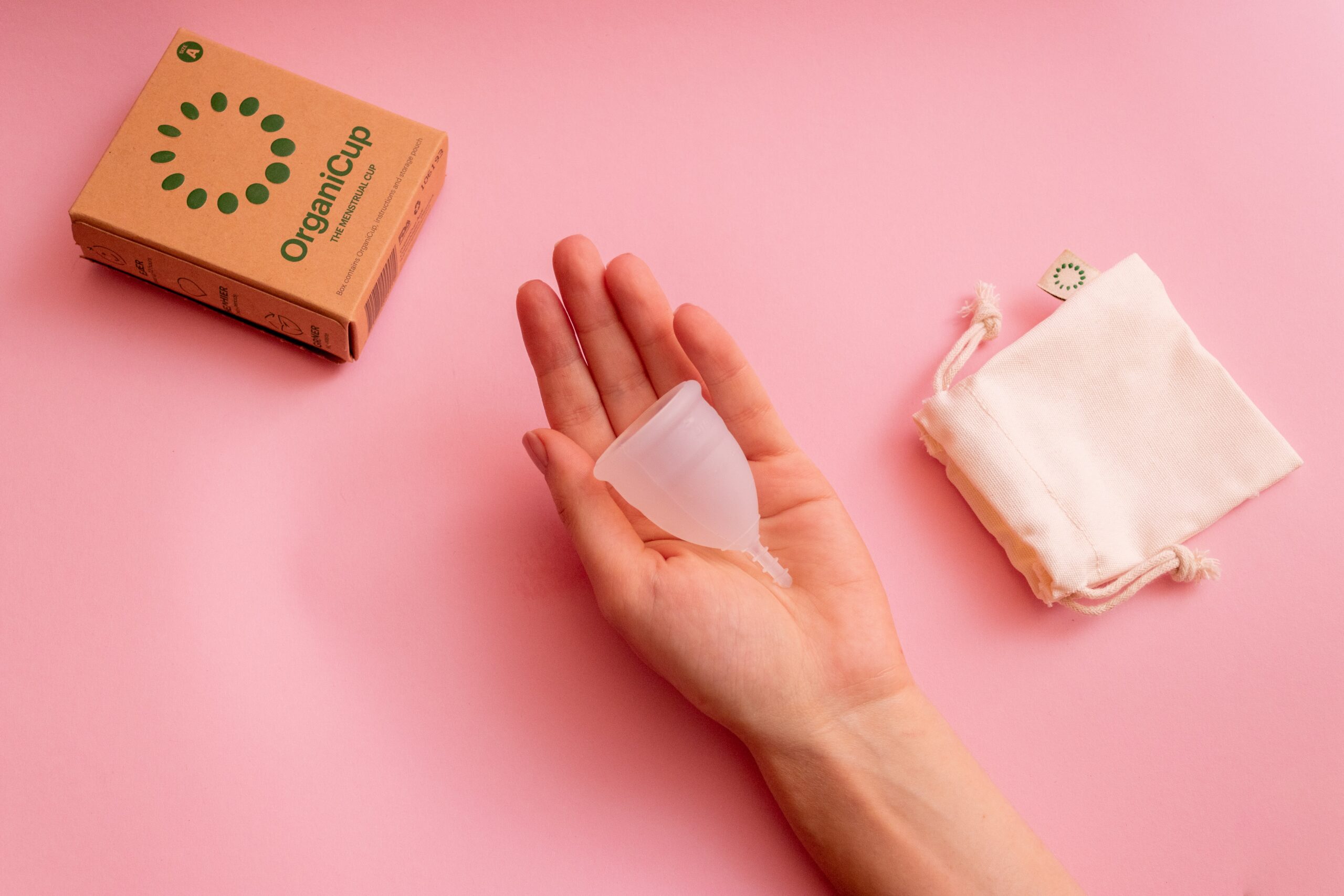In a unique pilot programme, the Karnataka Government distributed menstrual cups among adolescent girls in government schools in two districts of Karnataka in July. The initiative resurfaced the importance of making sustainable choices – including the usage of menstrual cups as a period product – and created awareness around environmentally-safe and inexpensive health decisions.
Despite many positive reviews, Adaa Khan*, homemaker and mother of two, can’t get her head around the idea of putting something inside for such long hours. She says, “Even though it’s claimed that you barely feel anything, it worries me to think what if it overflows without me realizing it. I know this may sound a little presumptuous. Also, the whole process of removal, emptying and sanitizing the cup sounds like a hassle.”
Unlike Khan, there are others who are so happy with menstrual cups that they claim to never return to customary sanitary napkins.
Annoyed by the rashes she faced each time during her periods, Pooja Sehgal, a resident of Faridabad, began to use the cup. She finds it a convenient option; all she has to do on heavy-flow days is to empty the cup frequently.
Sehgal recommends it to people around her. However, she points out that there is a lack of awareness around it that makes many women hesitant to use it.
Ritu Jotwani, corporate lawyer, roots for a sustainable environment and made this choice to reduce waste accumulation. She was initially anxious about a potential leak, but from second period onwards, she knew what she was doing and what the cup was supposed to do.
Although Jotwani once had difficulty removing the cup from her vagina, she asserts that it was because the vagina was not relaxed enough.
“I was stressed, and hence the pelvic muscles were clenched. That was discomforting”, she explains. Her gynaecologist informed that in situations like these, one needs to take deep breaths to relax and squat to take the cup out easily.
Ananya Mishra, student and part-time makeup artist, decided to try it out after coming across commercials for menstrual cup. She emphasizes that one’s body takes time to adapt to it; one might feel a little discomfort for the very first time, but after a few uses, one doesn’t feel a thing. “I didn’t get any rashes when I used the cup. So, it was a big yes for me”, she says.
Asked what she does to sterilize the cup, Mishra says, “After using the cup, you just have to wash it with soap and boil it for sometime. And that’s it. Although menstrual cup sterilizers are available in the market, they are not really necessary.”
Talking about the cost-friendliness of menstrual cups, Mishra says that women need sanitary napkins or tampons every month, and opting this alternative can save money for at least five years. “Just imagine how much money you’ll save in these years! For example, if one packet of sanitary napkins costs you Rs 100 a month. And one time purchase of a cup costs you around Rs 300-400, you’ll save at least Rs 900-1,000 each year”, she adds, elated.
“It gives you additional benefits, which napkins don’t. You can go swimming or even dance in the rain without any worry of leakage”, Mishra shares. “I advocate for menstrual cups to everybody wherever I go.”
There is no going back to sanitary napkins for Megha Shaji, Gurugram-based business analyst, who made the decision four years ago. She finds cups comparatively easier to use in public restrooms. She discovered the right fold for her after watching some educational Youtube videos. She says that one needs to empty it in 3-4 hours during heavy flow. However, there is no leakage even if the cup is full.
“Most of the girls shy away from using a cup from the fear of losing their hymen. Addressing such concerns and spreading awareness are really needed to encourage more people to make this switch”, she says.
Dr Bandana Sodhi, senior consultant in Obstetrics and Gynaecology Department, Fortis La-Femme, Greater Kailash, shares her expertise. “Normally menstrual cups are made of latex free material so that people allergic to latex can use it”, she says.

She says that generally people don’t have any kind of allergic reaction from menstrual cups – only people allergic to silicon or rubber can face problems which are very rare.
“There are different companies making different types of cups. To find out the size that fits you, you can always consult your gynaecologist who would take into account so many factors like whether you have given vaginal birth or not, strength of your pelvic muscles and firmness and flexibility of the cup”, Dr Sodhi says.
She describes the method of application, “The procedure includes washing your hands thoroughly, applying a little bit of water at the rim of the cup, folding it into half and inserting it into the vagina with the rim up. Once it is inside the vagina, just rotate it gently and leave it. It will take its shape and fit in”, she explains.
Dr Sodhi recommends the use of menstrual cups to her patients as it offers several advantages: it is environment-friendly and comparatively economical. Reusability of the cup is definitely fantastic and makes it more earth-friendly, she adds.
An engineer turned social sector professional Nitisha Pandey volunteers as a menstrual health educator. She has been handling period projects for 4.5 years now.
Addressing the issue of menstrual cup tearing the hymen, Pandey points out that the concept of virginity is a social construct to have control over women’s bodies. There is no scientific evidence of the same.
“The hymen is a stretchable skin at the entrance of the vagina. It comes in various shapes for people.” Pandey stresses, “It may be torn because of multiple reasons like swimming, cycling, increased athletic activities, among others and doesn’t necessarily mean that a person is sexually active.”

“In my experience, I’ve had a few people share their episodes of infection and leakage while using the cup. This could be because of not following proper hygiene measures, the cup being either too hard or soft and possibly the cup not working out for a particular person”, she says.
Pandey adds that our bodies are very unique and different from each other, so it’s completely okay for a period product not to work out for some people. “There are various cup folds that can be done to make the process of insertion easier”, she explains.
After the period is over, the cup needs to be sterilized again and stored in a closed, dry cotton bag or cloth, she says.
“If women and girls are motivated to try other period products, modern day cloth pads and period underwear are also among the available options”, Pandey suggests.
*Name changed to protect the identity
For more stories that cover the ongoings of Delhi NCR, follow us on:
Instagram: https://www.instagram.com/thepatriot_in/
Twitter: https://twitter.com/Patriot_Delhi
Facebook: https://www.facebook.com/Thepatriotnewsindia





